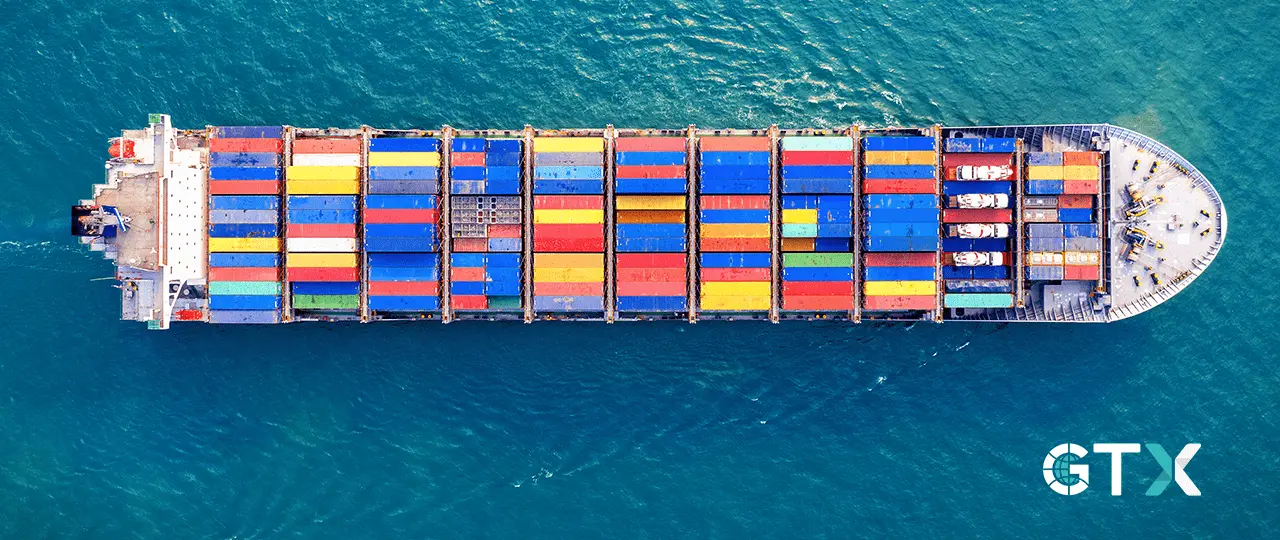International Trade Finance
Exporters engaged in international trade frequently encounter a multitude of challenges that hinder their financial operations. Limited cash flow, credit risk, currency fluctuations, and regulatory complexity are among the key obstacles faced by exporters. These hurdles often impede their ability to expand their business globally and hamper their profitability. However, international trade finance serves as a strategic solution to address these pain points and provide exporters with the necessary support to thrive in the global marketplace. Read more

- 1. International Trade Finance
- 2. Types of International Trade Finance
- 3. How Does International Trade Finance Work?
- 4. How is International Trade Finance different from other Financing Options?
- 5. Who Benefits From International Trade Finance
- 6. Benefits Of International Trade Finance For Exporters
- 7. How Can Exporters Get International Trade Finance
- 8. FAQs
What is International Trade Finance?
International trade finance refers to the financial instruments and services designed to facilitate and support international trade transactions. It provides exporters with the necessary funds and risk management tools to mitigate the challenges associated with cross-border trade.
International trade finance bridges the gap between the exporter and importer by providing solutions such as letters of credit, trade credit insurance, and bank guarantees, which offer security and build trust between trading partners.
Moreover, it facilitates smoother transaction flows, thereby enhancing the efficiency and speed of international trade activities. By doing so, it plays a critical role in the global economy, enabling businesses to expand beyond domestic markets and tap into new opportunities in foreign markets. This, in turn, contributes to economic growth and development on a global scale.
Types of International Trade Finance
International trade finance offers diverse tools, each tailored to support and safeguard different aspects of cross-border commercial transactions.
1. Letters of Credit (LC)
LCs are a widely used instrument in international trade. They guarantee payment to the exporter by the importer's bank, provided the exporter fulfills the agreed-upon terms and conditions.
2. Export Credit Insurance
Export credit insurance protects exporters against the risk of non-payment by their international customers. It provides coverage for both commercial and political risks.
3. Export Factoring
Export factoring involves selling accounts receivable to a financial institution, known as a factor, to obtain immediate cash. The factor assumes the risk of non-payment from international customers.
4. Supply Chain Financing
Supply chain financing solutions help exporters by providing early payment for invoices or receivables in exchange for a discount. This helps improve cash flow and reduces the risk of late payments.
5. Export Working Capital Loans
These loans provide exporters with working capital to finance production, purchase raw materials, and cover other operational expenses related to fulfilling international orders.
6. Bank Guarantees
This involves a bank offering a guarantee to a seller that it will fulfill the payment obligations of the buyer in case of default. It's commonly used in international trade to provide a sense of security to the seller.
7. Trade Credit
This is a form of credit extended by the supplier to the buyer, allowing them to pay for the goods at a later date. It's a common practice in international trade to help buyers manage their cash flow.
How Does International Trade Finance Work?
International trade finance operates through a sequential process involving the assessment of risks, the selection of suitable financial instruments, and their effective utilization to secure and facilitate cross-border trade transactions. It begins with a comprehensive risk assessment, evaluating creditworthiness, political stability, and currency volatility. Based on this assessment, parties choose relevant financial instruments like Letters of Credit, Export Credit Insurance, or Export Factoring . These instruments are then issued and utilized to ensure smooth transaction flow.
For example, in a Letter of Credit transaction, the importer's bank issues a guarantee of payment to the exporter, contingent upon the fulfillment of specified terms. This system not only secures payment for the exporter but also assures the importer of receiving the goods or services as agreed.
How is International Trade Finance different from other Financing Options?
International trade finance is distinct from other financing options in several ways.
- International trade finance is specifically designed to facilitate and secure transactions across international borders, which is not a focus of domestic financing.
- It addresses unique challenges such as foreign exchange risk, geopolitical risks, and differences in legal systems that are typically absent in domestic financing.
- International trade involves higher risks due to factors like political instability, currency fluctuations, and the creditworthiness of foreign trade partners.
- Trade finance instruments, such as letters of credit and export credit insurance , are specially created to mitigate the risks associated with international trade.
- A deep knowledge of international trade laws, customs regulations, and export-import procedures is essential for compliance and avoiding legal issues.
- It provides mechanisms to manage international payments, handle foreign currencies, and ensure timely settlement of transactions, which involve more complexities than domestic transactions.
- International trade finance often includes credit enhancement features like export credit insurance to protect exporters from non-payment risks, which is less common in domestic financing.

Who Benefits From International Trade Finance?
International trade finance is beneficial for various stakeholders involved in global commerce
Exporters
Exporters can benefit from improved cash flow, reduced credit risk, and access to working capital to expand their international trade operations.
Importers
Importers can leverage trade financing to negotiate better payment terms with exporters and manage their cash flow effectively.
Banks and Financial Institutions
Banks and financial institutions provide trade financing solutions to exporters, importers, and other intermediaries. They earn income through fees, interest, and commissions.
Benefits Of International Trade Finance
International trade financing offers numerous benefits to exporters, enabling them to overcome financial challenges and seize new opportunities in the global marketplace. Here are the key advantages of international trade financing:
1. Enhanced Cash Flow
International trade financing provides exporters with the necessary liquidity to bridge the gap between production and payment, ensuring steady cash flow.
2. Risk Mitigation
Export credit insurance and letters of credit mitigate the risk of non-payment or default by international customers, reducing credit risk for exporters.
3. Expanded Market Reach
With access to trade financing, exporters can confidently explore new markets, reach more customers, and expand their global footprint.
4. Competitive Advantage
Trade financing enables exporters to offer competitive payment terms, such as open account arrangements or deferred payment options, which can attract more international customers.
5. Currency Risk Management
Trade financing solutions often provide tools to manage currency risk, such as hedging instruments, allowing exporters to protect their profit margins against exchange rate fluctuations.
How Can Exporters Get International Trade Finance?
Assess Financing Needs
Determine the amount of financing required and identify the specific challenges you face in international trade.
Research and Select Financing Providers
Explore different banks, financial institutions, and specialized trade finance providers such as KredX GTX . Compare their offerings, reputation, and terms to find the most suitable partner.
Documentation
Gather all necessary documentation, such as trade contracts, invoices, purchase orders, and shipping documents.
Application
Submit your trade financing application to the chosen provider, along with the required documentation. Be prepared to provide additional information or clarification, if requested.
Due Diligence
The financing provider will conduct due diligence, assessing your creditworthiness, the creditworthiness of your international customers, and the viability of the trade transaction.
Negotiations
Once your application is approved, negotiate the terms of the financing agreement, including interest rates, fees, repayment terms, and any collateral requirements.
Agreement Signing
Review the financing agreement carefully and sign it once you are satisfied with the terms and conditions.
Disbursement
Upon signing the agreement, the financing provider will disburse the funds to your designated account or directly to your suppliers, depending on the financing arrangement.
Repayment
Effectively manage your international trade transactions and repay the financing facility according to the agreed-upon terms.




